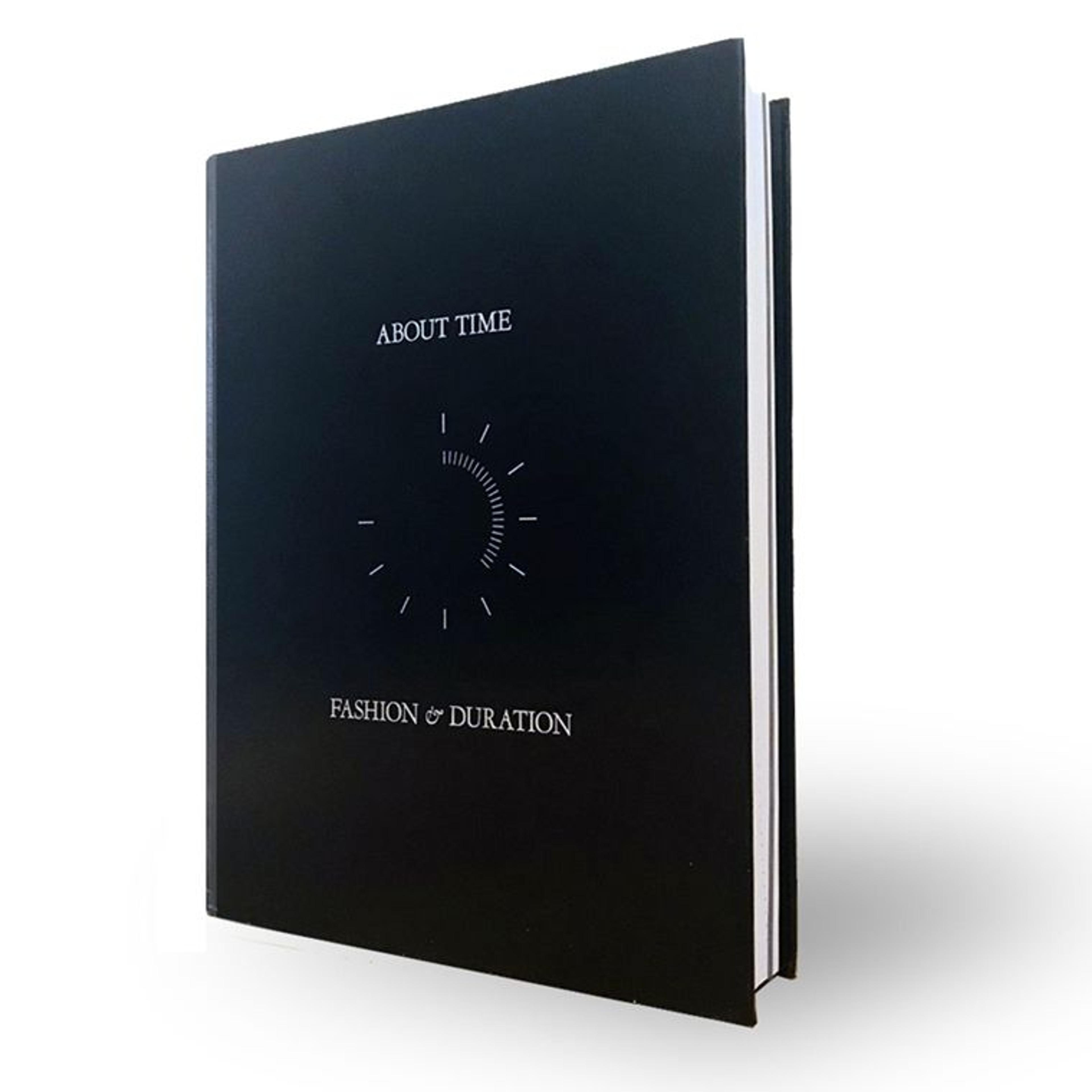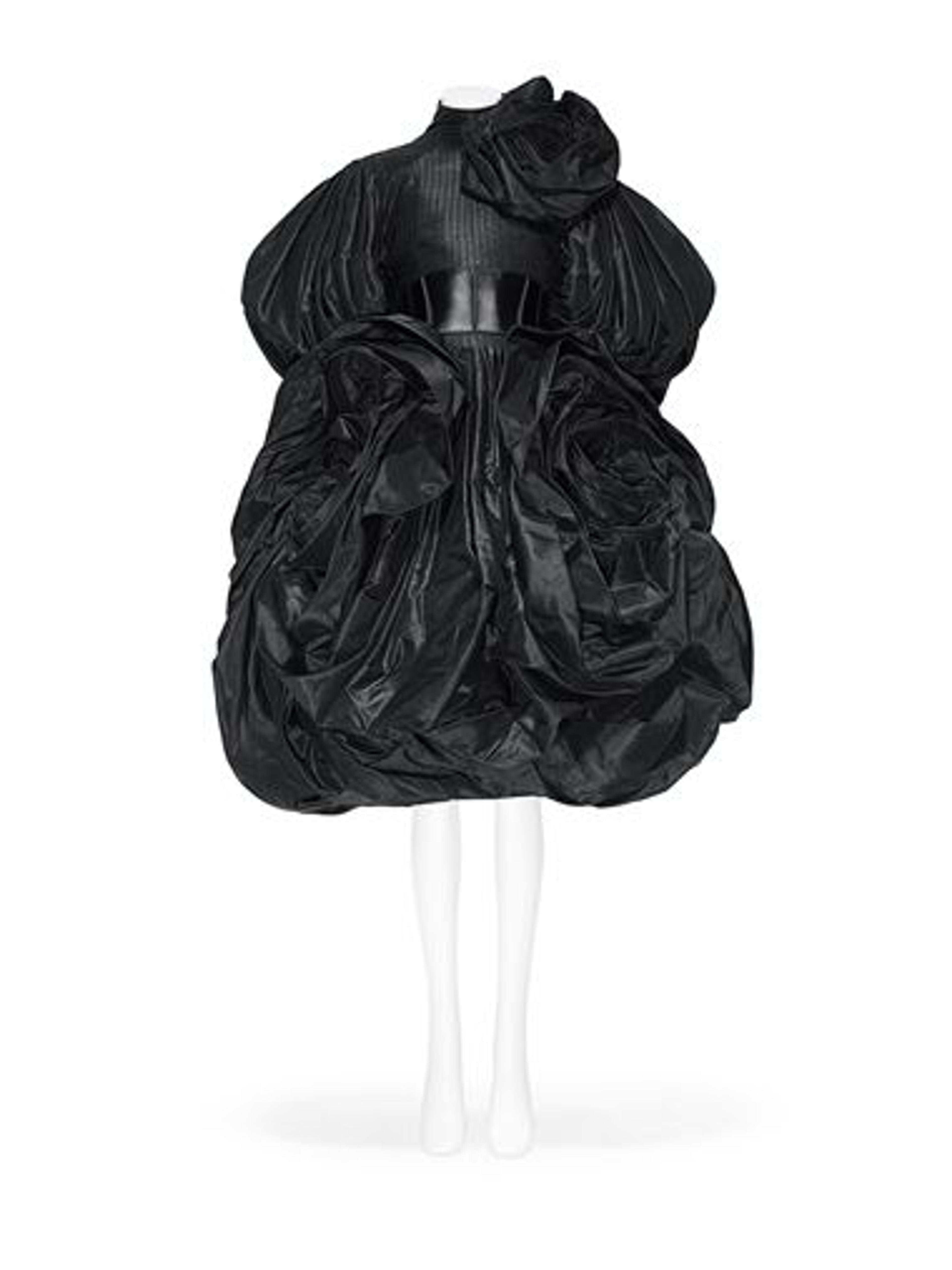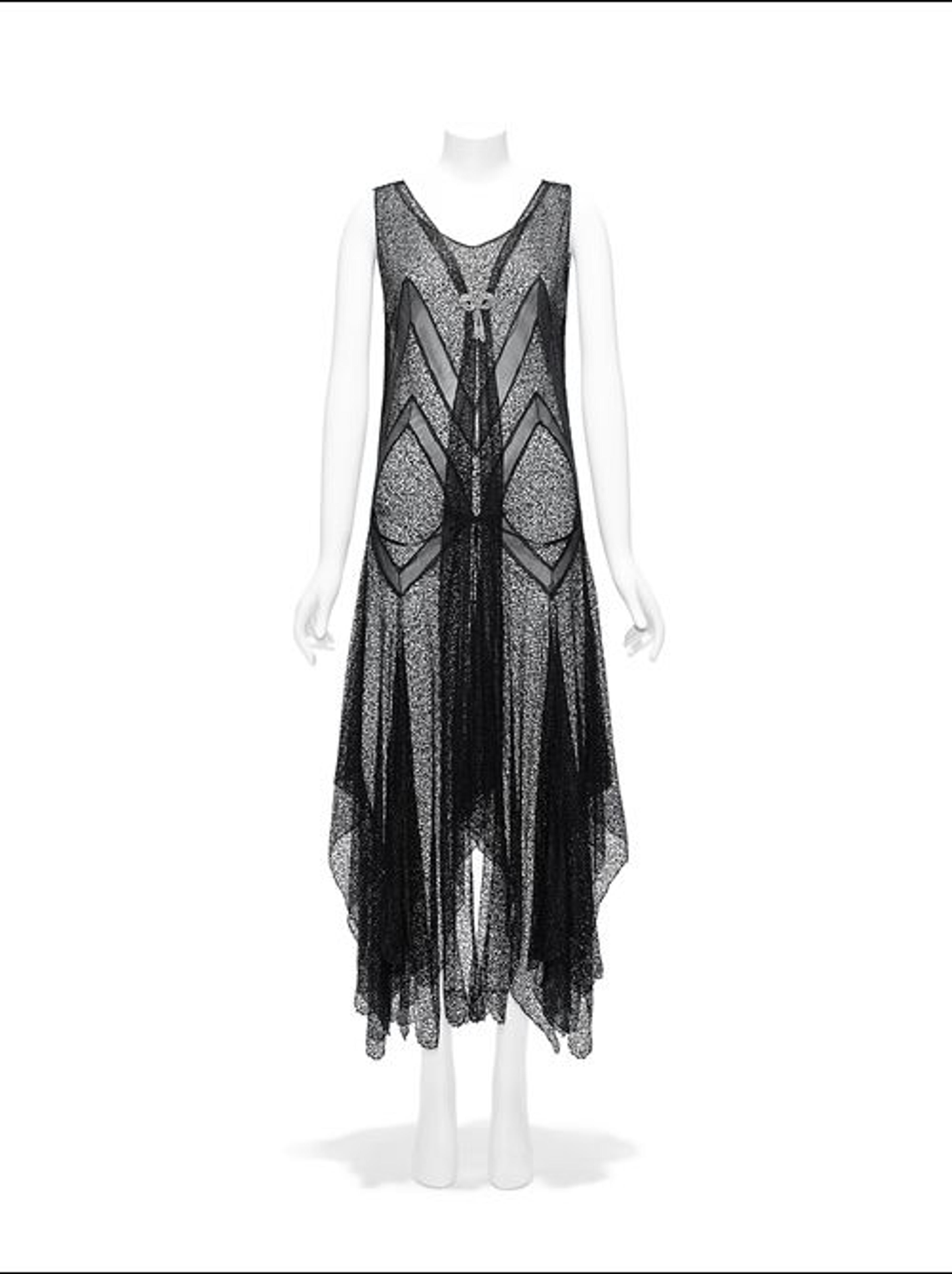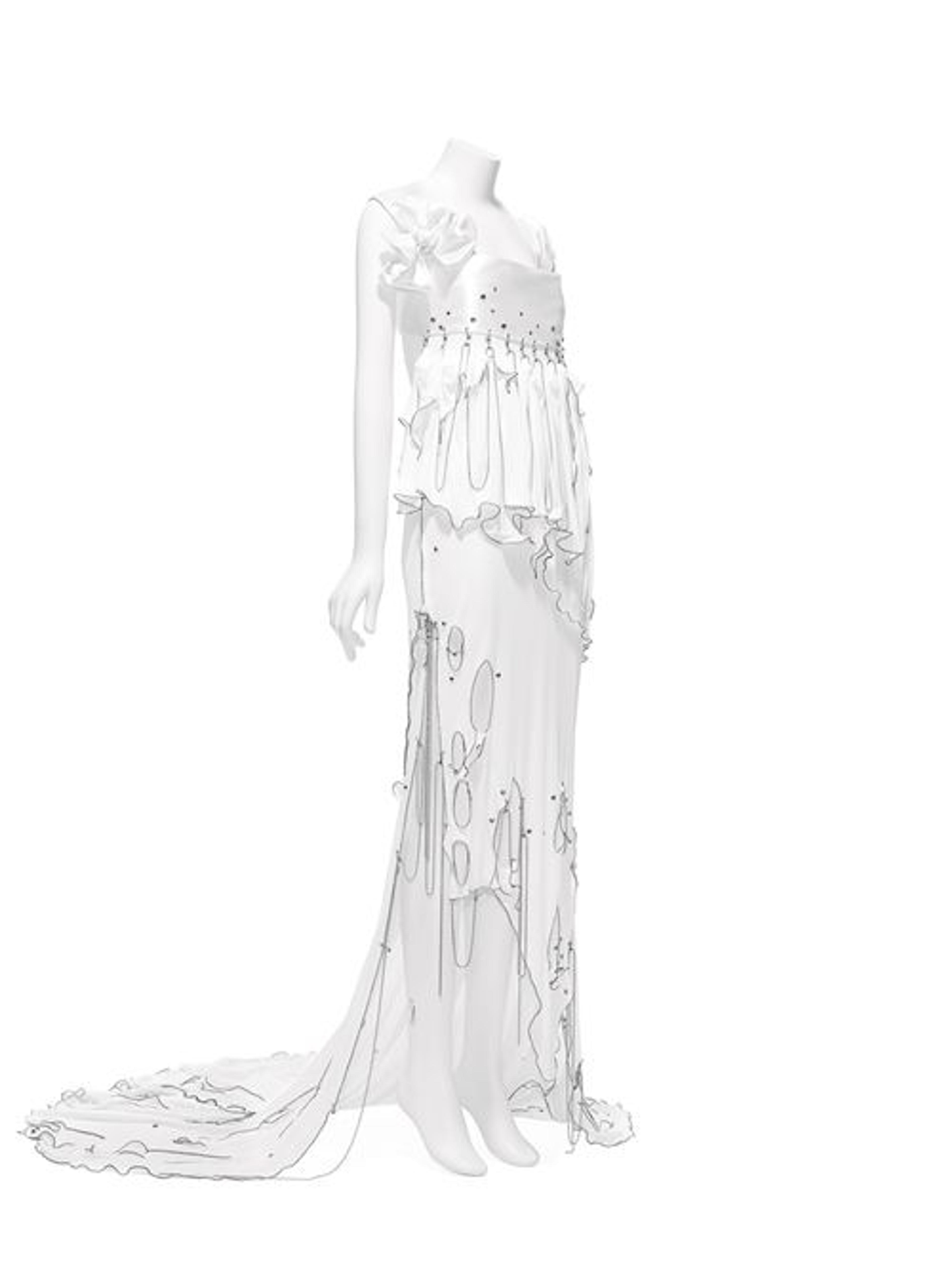"Out of Time": Pulitzer Prize Winner Michael Cunningham on His Latest Short Story

About Time: Fashion and Duration by Andrew Bolton with Jan Glier Reeder, Jessica Regan, and Amanda Garfinkel; an introduction by Theodore Martin; and short story by Michael Cunningham features 240 photographs by Nicholas Alan Cope and is available at The Met Store and MetPublications.
When the Met was founded in 1870, hemlines swept the floor and bustles more than doubled the width of a woman's silhouette. Fashion has changed dramatically in the last century and a half, but since 1946, The Met has celebrated the storied history of dress through its acclaimed Costume Institute catalogues and exhibitions. Postponed until October, About Time: Fashion and Duration will honor The Met's sesquicentennial by featuring 150 years of fashion through sixty works that form a linear timeline, each paired with an ensemble that shows either past or future iterations of a similar shape, material, pattern, or technique.
Though we will have to wait until fall to experience this unique history of fashion at The Met, the exhibition catalogue will be available in late June and can be pre-ordered now. The book features a short story by Pulitzer Prize–winning author Michael Cunningham that examines a day in the life of a woman through 150 years of dress. I had the opportunity to speak with Cunningham about his work, his deep love of Virginia Woolf, and the onward march of time as it pertains to fashion and to humanity more generally.
Rachel High: In addition to a theoretical essay on time and detailed art historical texts on each costume, About Time also features your short story "Out of Time." It is not often that exhibition catalogues include works of fiction. Could you discuss your contribution and how your work provides a different perspective on the focus of the book and exhibition?
Michael Cunningham: I was thrilled when Anna Wintour introduced me to the curator, Andrew Bolton, who approached me about writing something for this then-untitled catalogue and exhibition. Andrew told me it would have to do with fashion and with time's passage. I said I was a fan of both, and we went on from there.
That said, I did feel like a slightly unorthodox choice for a story about fashion. Although I'm interested in fashion—I revere artists like Alexander McQueen and Rei Kawakubo—I'm hardly an authority, and it's probably best that no one can see what I'm wearing at the moment.

Comme Des Garçons. Ensemble, Autumn/Winter 2004–5. Courtesy of Comme Des Garçons. Photograph © Nicholas Alan Cope
In my fiction, however, I always know how my characters are dressed. It occurred to me that any number of writers might have been better qualified to write about the garments themselves; my qualifications had more to do with the people in the clothes. No matter how you feel about fashion, there's no denying that we transmit complicated signals through what we wear. As a novelist, I'm alert to the ways in which clothes speak not only to who we are, but to who we imagine ourselves to be; who our time, our culture, and our class expect us to be; and the extent to which we do, or do not, conform to those expectations. I addressed fashion in the story through these different signals, but time's passage was another matter entirely.
It probably goes without saying that I think a great deal about time. Narrative is almost inevitably bound up in the effects of time on our lives and on the world in which we live. You could give just about any novel to a friend and say, "I hope you enjoy this book; it's about the passage of time." That's true whether the book in question is Leo Tolstoy's Anna Karenina or Virginia Woolf's Orlando.
Rachel High: Speaking of Virginia Woolf, in About Time, Woolf serves as a ghost narrator, with quotes from her works providing a poetic perspective on the sixty outfit pairings. Your book The Hours draws on Woolf's Mrs. Dalloway, and "Out of Time" references her novel Orlando. Could you discuss your interest in Woolf throughout the years and how her work factors into this new story?

The oldest work in the catalogue. Mourning Dress ca. 1870, American. Brooklyn Museum Costume Collection At The Metropolitan Museum Of Art, Gift Of The Brooklyn Museum, 2009; Gift Of Mrs. Clarence E. Van Buren, 1944 (2009.300.673a, b). Photograph © Nicholas Alan Cope

The most recent work in the catalogue. Alexander McQueen (British, Founded 1992), Sarah Burton (British, Born 1974), Ensemble Autumn/Winter 2019–20. Courtesy of Alexander McQueen. Photograph © Nicholas Alan Cope
Michael Cunningham: My interest in Woolf goes back to high school when I first read Mrs. Dalloway. It was the first great book I'd read. It was revelatory. It actually re-wired me. And if I was still a little young to be able to follow the fractured narrative, I was old enough to appreciate the vividness and potency of the prose. I'd never read sentences so intricate and precise, so graceful and lyrical and original. I felt then, and feel today, that almost every line in that book could be put on display in a sentence museum (I hope to found such a museum someday, when time and resources permit).
The Hours is a riff, of sorts, on Woolf's Mrs. Dalloway, which Woolf wrote several years before she wrote Orlando. In Mrs. Dalloway, the entirety of a woman's life is conveyed as we see her through a single, outwardly ordinary, day.
When I accepted the invitation, Andrew was already thinking about Virginia Woolf and Orlando as an aspect of the show. It made perfect sense for an exhibition that would encompass fashion's evolution over the course of 150 years; Orlando is the story of a male poet born during the Elizabethan Era who lives for several centuries and, at a certain point without undue consternation on his or anyone else's part, is transformed into a woman.

Minute 57 of 60. Left: Iris van Herpen. Dress, Autumn/Winter 2012–13 Haute Couture. Gift of Iris van Herpen, in honor of Harold Koda, 2016 (2016.185). Right: Charles James. Ball Gown, 1951. Brooklyn Museum Costume Collection at The Metropolitan Museum of Art, Gift of the Brooklyn Museum, 2009; Gift of Mr. and Mrs. Robert Coulson, 1964 (2009.300.1311). Photographs © Nicholas Alan Cope
My story for The Costume Institute publication is a hybrid: The considerable time span taken from Orlando coupled with the single-day compression of Mrs. Dalloway. It's the story of a day that begins in the 1870s and ends in the present day, the timespan covered by The Costume Institute's exhibition.
Since I first read Mrs. Dalloway, I've come to believe that many of us who grow up to be readers carry with us a first book, not unlike our first kiss. For some, the "first" book may not necessarily have been a great book. I mean the book that, for whatever reason, first revealed to us the power that can be generated by ink, paper, and the words in the dictionary, arranged in surprising and remarkable ways. The book that shows us, for the first but by no means the last time, how much books can mean to us.
The Hours and "Out of Time," then, are attempts to pay some sort of homage to the experience of first encountering Woolf and Mrs. Dalloway, an experience from which I've, thankfully, never recovered.
Rachel High: About Time addresses different concepts of time—from the supposedly objective ticking of the clock to the more subjective “women's time"—as it pertains to fashion. Your story addresses this concept of women's time but also confronts notions of "queer time," which is said to run counter to the chronology of so-called norms as defined by straight culture. Could you talk about how you employ these different notions of time in your fiction and how you use dress to convey these shifts?
Michael Cunningham: Women's time was of particular concern to Virginia Woolf. She was livid about the then-popular notion of "the angel in the house," taken from a sentimental poem that idealized women as fundamentally nurturing, domestic, and, well, in the house instead of out in the world.
If women were the angels in the house, "women's time" differed from worldly time in that women's clocks measured the hours according to the needs of husbands and children—the errands and tidying-up that bolstered the so-called "real time" in which men lived and worked.

This evening dress dates from the year Woolf published Orlando. Evening Dress, ca. 1928, probably American. Gift of Richard Martin and Harold Koda, 1992 (1992.399a, b). Photograph © Nicholas Alan Cope
Andrew and I talked at length about "women's time" and "queer time" before I started writing. Although I knew already about angels in houses, I had more to learn. Andrew sent me some extremely helpful material on the subject, most prominently a seminal essay, "Women's Time," by Julia Kristeva, published by the University of Chicago Press in 1981.
I learned, for instance, that in the 19th and early 20th centuries, women in society were expected to change outfits as often as five times a day, from morning dress to evening attire. Getting dressed, undressed, and re-dressed, not to mention acquiring the clothes themselves, could occupy almost half of a woman's waking hours.
I also learned that, in an increasingly democratic society in which politicians, thinkers, and entrepreneurs might be invited to social events even if they'd failed to be born into "good families," clothes came to matter more than ever. A wife who showed up at a dinner or ball wearing the wrong necklace or gloves could easily trigger a barely-concealed alarm system: She and her husband are not really our sort, are they?
Good luck with that one, angel of the house.
This historical and theoretical research helped shape my own ideas about the story I'd write for the catalogue. It became clear that the story—set in a single day lasting roughly 150 years—would focus primarily on a woman whose evolving attire, as she lives through the day, would reflect her increasing independence, her powers of self-determination, and her gradual exit from women's time into real time.
That rather unconventional structure could also accommodate the various three-way collisions between women, men, and the titanic clock of history itself. The woman in the story would, for instance, wake up during the Gilded Age and have lunch during the Great Depression.

Garments representing different interruptions in linear time, like this one, are paired with each work following the chronological timeline that runs through the book. Zandra Rhodes. "Punk" Wedding Dress, 1977. Gift of Zandra Rhodes, in honor of Harold Koda, 2016 (2016.562a, b). Photograph © Nicholas Alan Cope
As to "queer time," that aspect came into the story somewhat later. As I started writing, it seemed that the central character, a young woman I named Odessa, married to a prosperous older man, should start out as a relatively straightforward, if not necessarily entirely straight individual. Her personal evolution would best jibe with the progression in The Costume Institute's exhibition if she initially cooperated with the sartorial demands of her time(s); if she wore more or less what she was supposed to wear. And so a second character, Odessa's closest friend, a queer person named Sasha, entered the narrative. If Odessa was to be essentially straight at the story's outset, the story needed someone like Sasha, who would more queer-ly recognize and question the norms, who'd be more capable of either using them or defying them, who'd serve as a counterbalance to Odessa's more generally cooperative (all right, her more straight) nature. If Odessa, early on, would be conscripted to her own dresses, Sasha would, from the get-go, know that the wearer could elect to command the clothes, rather than vice versa.
Rachel High: We're in a very particular moment right now when the accelerated pace of modern life seems to have temporarily slowed, or at least altered in some way. How has your thinking about your story, this book, and time in general changed during this period?

Minute 13 of 60. Left: Red Cross Uniform, 1918, American. Gift of Frances Townsend Fisher, 1994 (1994.352.1a, b ). Photography © Nicholas Alan Cope. Right: Maison Martin Margiela, John Galliano. Ensemble, Spring/Summer. Courtesy of John Galliano for Maison Margiela. Photographs © Nicholas Alan Cope
Michael Cunningham: Like any story written before the pandemic—I was correcting page proofs at about the time we heard about a virus that had recently flared up in a city in China—it seems already as if it's being beamed in from another time, and really, from another world.
We are all, needless to say, living in an extremely dark and difficult present while doing the best we can to contemplate an uncertain and unsettling future.
If "Out of Time," my own story, feels like it's being transmitted into the present from another place and time entirely, I can't help wondering about the nature of the place and time when this, I mean this sentence, will be read. I can only hope it'll be a better or, at the very least, a less frightening, less lethal place and time.
I'll add that it was, as it turns out, a benediction of sorts to have focused on, and written about, what we as a species have survived since 1870: the Spanish flu epidemic, the Great Depression, and two world wars, to name a few. It would, however, be disingenuous if I failed to mention my increased awareness of how many of us failed to survive.
Here's to time's passage, then. Here's to the memory of those lost. Here's to the heroism of those who, right now, are risking their lives to save the lives of others. Here's to a better future, whenever it arrives.
Related Content
Learn more about the exhibition, About Time: Fashion and Duration, opening at The Met Fifth Avenue on October 29, 2020, and watch a video preview.
See a selection of objects that will be on view.
Read an excerpt from Michael Cunningham's short story, "Out of Time" from About Time: Fashion and Duration.
Rachel High
Rachel joined the Publications and Editorial Department in 2014 where she has previously held the roles of Publishing and Marketing Assistant and Assistant for Administration. She manages the MetPublications website, the Museum's text licensing program in all languages, and the @MetPubs Instagram account. In addition to her work marketing The Met's titles, Rachel also consults on Museum co-publications and the Costume Institute catalogues. She has been a speaker at the National Museum Publishing Seminar and is an organizing member of the International Association of Museum Publishers. She holds a B.A. in Art History from New York University and an M.A. in Art History from Hunter College. Her own research centers on the intersections of art and publishing.
Selected publications
“Something Else Press as Publisher.” Master’s thesis, Hunter College, City University of New York, 2020. CUNY Academic Works.